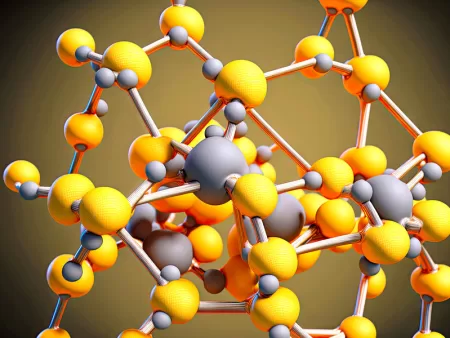
Have you ever pondered the secret behind the vibrant energy of wellness enthusiasts and top athletes?
Envision empowering your body to reach its pinnacle of health—achieving satiety, enhancing muscular form, and accelerating recovery with the aid of whey protein. How to properly introduce it into your diet and how to avoid side effects?
What is Whey Protein?
Picture the alchemy of milk into cheese, where whey emerges as a serendipitous elixir, rich in potential. This erstwhile overlooked by-product is transformed into a revered powder, championed by athletes and health aficionados alike for its protein-rich prowess.
Its varieties
In the realm of whey protein, diversity reigns supreme, offering a spectrum of forms to align with varied dietary endeavors:
- Whey Concentrate: This variant serves as the perfect introductory chapter to whey, balancing protein, taste, and essential nutrients, with a hint of lactose and fats for those who prefer a touch of natural wholesomeness.
- Whey Isolate: For the purists and the meticulous, whey isolate represents a distilled essence, prioritizing protein purity by minimizing lactose and fat, perfect for the lean, mean diet plans.
- Whey Hydrolysate: The epitome of efficiency, whey hydrolysate has undergone a pre-digestion process, making it the quickest route for protein to reach muscles, indispensable for those critical recovery moments post-exertion.
Nutritional Virtues of Whey
Within whey protein lies a cornucopia of essential amino acids, the bedrock of muscle maintenance, repair, and overall protein synthesis within the body. A scoop can deliver an impressive 20 to 30 grams of high-quality protein, making it a cornerstone for those aiming to meet their daily protein benchmarks, vital for muscle aficionados and weight watchers alike.
The Compelling Case for Whey Protein
The narrative of whey protein is not just about muscle and might. It extends its virtues to satiety, acting as an appetite regulator, and embarks on a crusade against unnecessary snacking. Beyond the realm of physicality, it enhances the body’s antioxidant defense, particularly through glutathione, painting whey protein not just as a supplement, but as a holistic health enhancer.
Whey Protein for Weight Loss Simplified
Feeling Full with Whey Protein
One cool thing about whey protein is it helps you feel not so hungry. You know how sometimes, even after you eat, you still want to snack? Whey protein can help stop that. When you drink a shake or eat something with whey protein, your stomach sends signals to your brain saying, “Hey, I’m full!” That means you end up eating less without trying too hard.
Eating Less Without the Stress
Because whey protein helps you feel full, you naturally eat less. Instead of reaching for chips or cookies, having a whey protein snack can help you stay on track without feeling like you’re missing out.
Keeping Muscles Strong
When people lose weight, they want to lose fat, not muscle. Whey protein is great because it helps protect your muscles. This means as you lose weight, you keep your muscle strength. Muscles are good because they burn more calories, even when you’re just sitting around. So, whey protein not only helps you lose weight but keeps your body strong and healthy.
Whey Protein and Its Weight-Loss Wonders
Evidence Unearthed
The intrigue around whey protein and weight loss has captured the attention of the scientific community, leading to an array of studies and experiments. The findings? They point to whey protein being more than just a supporting character in weight loss narratives. Participants who embraced whey protein in their diets frequently outperformed their counterparts in fat reduction, all while maintaining their muscle’s integrity and power.
Revelatory Findings
Two major revelations stand out from the research. First, whey protein has a unique ability to make you feel fuller for longer, directly addressing the challenge of overeating. This is backed by reports from individuals who felt significantly more satisfied after consuming whey protein, leading to a natural decrease in their food intake as the day progressed. Secondly, the studies hint at an enhanced fat-burning process with whey protein consumption. This phenomenon is likely linked to its muscle-preserving properties, ensuring the metabolic rate doesn’t plummet but rather remains lively and efficient.
Beyond the scale, whey protein’s interaction with the body’s hormonal framework offers a fascinating insight. It boosts signals that notify the brain of fullness while reducing the hunger pangs, showcasing a sophisticated mechanism by which whey protein facilitates weight management.
Fusing This Power Protein into Your Slimming Plan
Creative Ways to Incorporate It
Enrich your morning shake or evening snack with a scoop of this nutritious powder. It blends well into both savory and sweet recipes, adding a protein punch to your pancakes, cookies, or even soups. It’s an effortless way to boost your protein intake, making every bite count towards muscle maintenance and satiety.
Timing Matters
Timing is key when integrating this supplement into your regimen. A shake enriched with it after your workout can aid in muscle recovery. On hectic days, a drink or bar can serve as a quick, nutrient-packed meal. To avoid unhealthy snacks, consider a light shake as a filling afternoon snack.
Choosing the Right Product
With numerous options available, select a product with minimal added sugars and unnecessary fillers. For those sensitive to dairy, isolate versions are an excellent choice, offering the same benefits with less lactose. Diligent label reading and product research will guide you to the best fit for your dietary needs and goals.
The Role of Whey Protein in Overall Diet
Integrating this nutritional powerhouse into a well-rounded diet goes beyond merely adding more protein. It’s about creating a balanced eating plan that fulfills all your body’s needs — from vitamins and minerals to essential fibers.
Finding Balance in Your Meals
True balance in your diet means ensuring each meal brings something valuable to your table — not just in terms of taste but also nutrition. This includes getting enough fruits and veggies for vitamins, whole grains for fiber, and good fats from sources like avocados and nuts. Adding a scoop of our nutritional star into your meals can help you maintain muscle and stay full longer, all while supporting your overall health.
Meal Ideas for a Balanced Diet
Here are some simple meal ideas that blend our key nutritional element with other important food groups, ensuring a balanced intake:
- Breakfast Boost: Start your day with a smoothie by blending a scoop with your favorite fruits, a handful of spinach, and a cup of milk or a milk alternative. This kickstarts your morning with a rich mix of proteins, vitamins, and minerals.
- Nutritious Pancakes: Make your morning pancakes more filling by adding a scoop of protein to the batter.
- Stuffed Peppers with a Twist: Mix cooked rice, beans, spices, and a scoop, then stuff this mixture into bell peppers and bake. It’s a satisfying meal that covers your protein, fiber, and vitamin needs.
- Homemade Energy Bars: Combine oats, nuts, dried fruits, a bit of honey, and a scoop for an energy bar that’s perfect as a post-workout snack or a midday pick-me-up.
Safety and Precautions
Adopting a diet that’s in harmony with your body’s demands means fine-tuning not just the types of nutrients you consume, but their quantities as well. It’s particularly crucial when incorporating supplemental nutrients aimed at supporting specific health and fitness goals.
Striking the Right Nutritional Balance
A balanced approach to nutrient intake is foundational for optimal health. Overindulging, even in beneficial nutrients, can place undue stress on bodily functions. This holds especially true for supplements, where exceeding the body’s needs may lead to inefficiencies, notably affecting organs tasked with metabolizing these excesses. The key lies in aligning consumption with your body’s actual requirements, which vary by activity level and health ambitions.
Tailoring Nutrient Quantities to Your Life
To accurately gauge your daily nutrient requirements, consider your physical weight, activity intensity, and health goals.
- Determine your weight in kilograms (divide pounds by 2.2).
- Apply a multiplier based on activity: 0.8 for sedentary lifestyles, 1.2 for moderate activity, and as high as 2.0 for intensive training regimes.
- The outcome gives you a personalized daily gram target, ensuring your intake supports your body’s needs without surplus.
Embracing Variety in Nutrient Sources
Supplements offer a convenient route to meeting nutrient goals, yet deriving nutrients from a diverse range of whole foods is equally important. Integrating proteins from beans, dairy, seeds, and lean animal sources ensures you’re not just meeting your protein needs but also consuming a variety of other essential nutrients for comprehensive health benefits.
By precisely calculating and meeting your nutrient needs, and valuing the diversity of sources, you can fully leverage the health benefits of a nutrient-rich diet, optimizing both fitness outcomes and overall health without imposing unnecessary strain on your body.
Conclusion
Whey protein, a by-product of cheese making, is esteemed for its health and fitness advantages, particularly in muscle care and slimming efforts. It manifests in several forms: concentrate for general wellness, isolate for those minimizing lactose, and hydrolysate for quickest bodily uptake. Notable for making you feel fuller longer, it assists in managing eating habits and safeguarding lean muscle during fat loss phases, thus boosting metabolism. Research underscores its efficacy in fat reduction and muscle preservation, highlighting whey protein as a crucial element of fitness regimens. Strategically blending whey protein into a diverse diet can significantly augment nutritional profiles, supporting broader health objectives.
FAQs
It excels in aiding muscle recovery, supporting efforts in body fat reduction while keeping muscle intact, and enhancing satiety which assists in dietary control.
Concentrate offers a balanced nutritional profile with minimal processing, isolate provides a lower lactose option, and hydrolysate is broken down for swift absorption by the body.
Its role in promoting a feeling of fullness and maintaining muscle during calorie restriction makes it a strategic ally in weight management endeavors.
Individuals with dairy sensitivities or those under medical supervision for specific conditions should seek advice from a health professional before adding whey protein to their diet.
Beyond shakes, consider mixing it into oatmeal, incorporating it into homemade energy bars, or using it as a protein boost in soups and sauces for a nutritious twist on everyday dishes.







